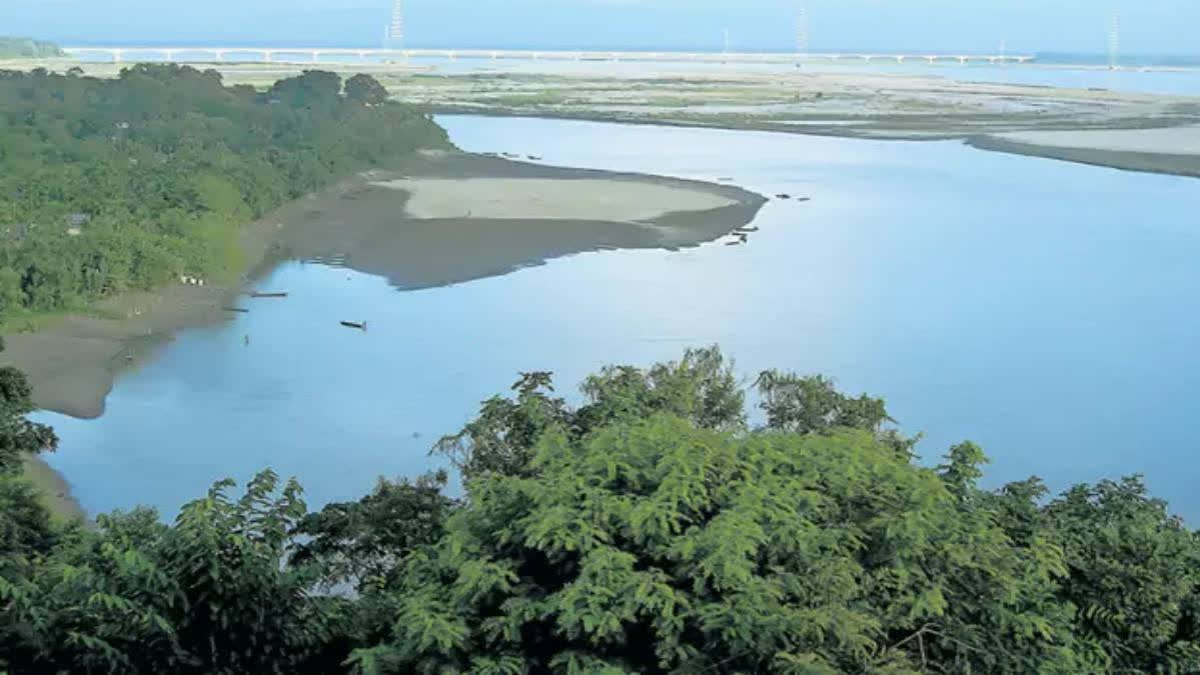New Delhi: India on Friday responded cautiously yet firmly to China’s unveiling of a major hydropower project on the Yarlung Zangbo River, known as the Brahmaputra in India, asserting its established rights to the river’s waters as a downstream nation and taking up the interests of other lower riparian states as well.
The Ministry of External Affairs reiterated longstanding concerns about the impact of such projects on the Brahmaputra River, calling for Beijing to adopt transparent practices and consult with affected countries.
"As a lower riparian state, we have established rights to the use of the waters of the river," External Affairs Ministry spokesperson Randhir Jaiswal said during his regular media briefing here. “We have consistently expressed through expert level as well as diplomatic channels our views and concerns to the Chinese side on mega projects in their territory."
Jaiswal said that India's views have been "reiterated along with the need for transparency and with consultancy with downstream countries following the latest report".
"The Chinese side has been urged to ensure that the interests of the downstream states of the Brahmaputra are not harmed by activities in upstream areas," he said. “We will continue to monitor and take necessary measures to protect our interests."
Last month, the Chinese government approved the construction of the dam on the lower reaches of the Yarlung Zangbo River, state-run Xinhua news agency reported citing an official statement. The dam, to be built at a cost of $137 billion, is expected to be the world’s largest hydroelectric project when completed and will produce nearly 300 billion kilowatt-hours (kWh) of electricity annually. That means it will generate three times the power of the Three Gorges Dam on the Yangtze River, also in China, which is currently the world's largest hydroelectric project.
Though the massive project was included in China's 14th five-year plan from 2021 to 2025, it was only last month that Beijing approved it sparking concerns among experts in India and Bangladesh, countries through which the Brahmaputra flows.
However, the Chinese foreign ministry has defended the construction of the dam saying that China has always been responsible for the development of cross-border rivers. During a regular media briefing in Beijing last month, foreign ministry spokesperson Mao Ning said that China's hydropower development in the lower reaches of the Yarlung Zangbo river " aims to speed up developing clean energy, and respond to climate change and extreme hydrological disasters".
"The hydropower development there has been studied in an in-depth way for decades, and safeguard measures have been taken for the security of the project and ecological environment protection,” Mao said. "The project has no negative impact on the lower reaches. China will continue to maintain communication with countries at the lower reaches through existing channels, and step up cooperation on disaster prevention and relief for the benefit of the people by the river."
However, the fact of the matter is that the Brahmaputra is the lifeline of Arunachal Pradesh and Assam, providing water for drinking, irrigation, and hydropower. A dam in Tibet could significantly reduce water flow during dry seasons, affecting agriculture and drinking water supply. Reduced flow could lead to silt deposition in the river, adversely affecting soil fertility in the floodplains.
